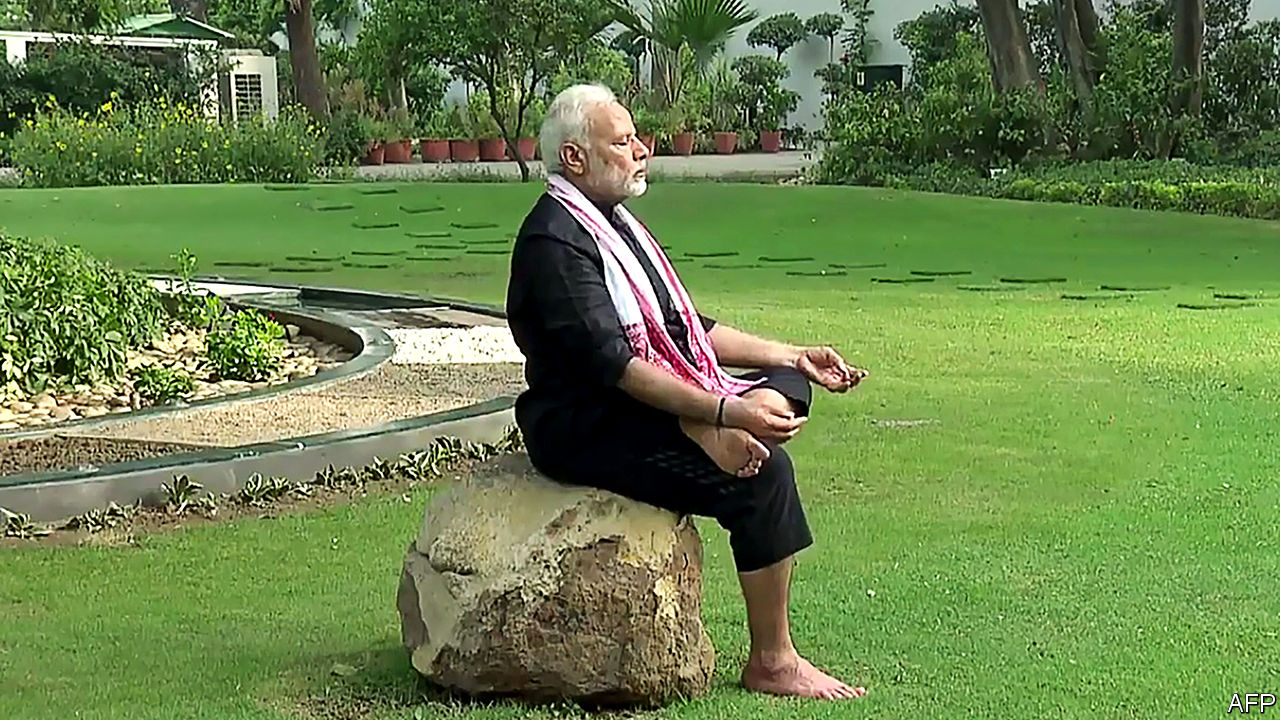NaMo image factory by Economist
The boosting of Mr Modi’s image is not just down to dress sense. Since taking office in 2014 his government has spent some $500m on advertising, much of which bears the beaming prime minister’s picture. The 21 state governments run by his party, the Bharatiya Janata Party, may have spent similar sums. Even private companies use Mr Modi’s image to promote their wares.
Pro-Modi fare swamps Indian social media. The prime minister has more than 40m followers on both Facebook and Twitter. More than 5m have downloaded a Modi smartphone app. Among other things, internet followers have been sent links to animated videos featuring Mr Modi as a yoga instructor. He appears as an androgynous, air-brushed uncle with flawless technique. He also promotes the videos on his monthly radio show, broadcast in 18 languages by All-India Radio. One in five households is said to tune in to “From the Heart”.
All this image-making is carefully controlled. The prime minister makes few unscripted appearances. He does not bring journalists along when he travels. In a break with tradition, he has never held a press conference. At a recent, rare “interaction” with news editors from the southern state of Tamil Nadu, the dozen visitors were told the meeting was wholly off the record. Oh, and they were to avoid the topic of politics.
As it is, media analysts say, much of India’s press is too dependent on advertising from the government, or from friends of the ruling party, to be really critical. This is especially true of television. The recent fate of three senior staffers at ABP News, a Hindi channel, illustrates the perils.
Aware of criticism over economic distress suffered by India’s farmers, Mr Modi devoted the June edition of “From the Heart” to a “dialogue” with farmers. It featured a woman in the poor, remote state of Chhattisgarh who declared that her income had doubled since he came to power. An ABP News investigative programme subsequently tracked down the woman, who confessed on camera that she had been coached to make the claim.
Soon after, the channel’s satellite feed began to experience strange interference precisely during this programme’s airtime. A big advertiser, known for close ties to the ruling party, pulled out. The channel’s ratings fell. Told by the management to drop any reference to Mr Modi, two top staffers quit. A third was sent on extended leave. As soon as they were gone, claims a letter from the programme’s now-unemployed anchor, the technical problems vanished, and advertisers returned. Easy as changing clothes.
https://www.economist.com/asia/2018/08/11/narendra-modis-image-factory?frsc=dg%7Ce more






